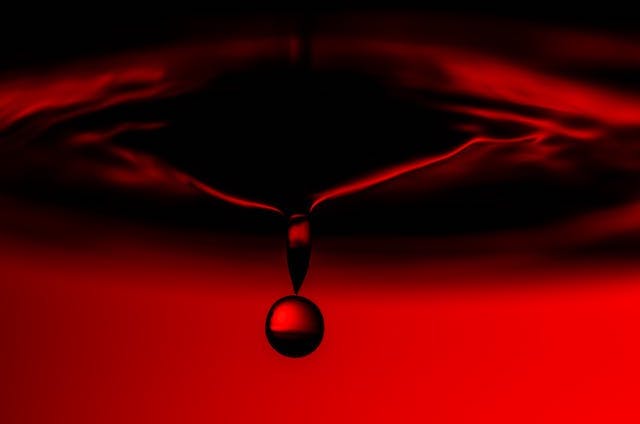
NFT Drop Styles. Find the Right Drop for You.
Introduction
An NFT drop refers to the release of a new collection of NFTs and the manner in which it’s made available to the public. Whether free or paid, artists have a ‘drop’ – the initial point when an NFT or collection can be obtained. This creates great opportunities for marketing in terms of exciting ways to engage collectors and build hype before launch.
Creators and collectors have the option to choose between different NFT drop styles – and it matters because it becomes a strategic approach when the drop style method can impact sales success. Likewise collectors looking to get in early on drops can understand the various ways an NFT can be released in order to maximize prospects.
Want to improve your NFT hunting or project launch prospects? Read on to find the right drop style for you.
Exploring the Landscape of NFT Drops
There are many options available when it comes to choosing an NFT drop style. The impact of a drop style on NFT value and demand can often be great, making picking the right one critical. Let’s break down some popular drop styles:
- Open Edition (OE) Drops: Imagine a digital art gallery with flexible hours. An open edition NFT drop is a way to release NFTs without a limit on the number of editions that can be minted. With OEs, collectors can mint as many tokens as they want within a certain time period, which is usually 24–72 hours, but it can also be open-ended.
- Limited Edition Drops: With a limited edition NFT drop, a predetermined number of NFTs are minted at a specific time, date, and price, like a photographer releasing numbered copies of a print, but in the digital world. Limited edition collections are often more expensive and focus on selling out. Collectors scramble to mint these NFTs, hoping to snag a coveted piece.
- Auction Drops: Get ready to witness a digital bidding war. Auction drops transform the minting process into a thrilling competition. Collectors place bids, driving the price up until the hammer falls on the highest offer. It’s like being at a high-stakes auction for a one-of-a-kind masterpiece, but at the click of a button.
- Blind Box Drops: Surprise! Blind box drops add a layer of mystery to the minting process. Collectors know the collection theme but not the specific NFT they’ll receive. It’s like grabbing a lucky dip bag of digital goodies filled with anticipation and the potential to score something truly unique.
- Free Drops: Not all NFTs come with a price tag. Free drops allow creators to generate buzz, reward loyal communities, or even distribute access tokens for future utilities. Think of it as a digital party favor, a small token of appreciation with the potential to unlock bigger things.
- Bundle Drops: Sometimes, one NFT just isn’t enough. Bundle drops combine multiple NFTs into a single package, offering a discounted price or exclusive bonus content. It is a way for collectors to buy multiple NFTs together as a package deal. Imagine a behind-the-scenes sketch bundled with a finished artwork, adding value and context for collectors.
- FCFS (First Come First Served): A traditional computing approach that’s been around for years, FCFS is also referred to as FIFO – First In First Out. Like a grocery store line IRL, the first in line is the first to be served no matter the request size. For example, when a drop is oversubscribed, FCFS might be used to algorithmically determine who should be served and in what order.
- Dutch Auctions: Dutch, or ‘Reverse’ auctions are another long-standing traditional method of NFT drops. Its early real-world use was back in the day for farmers to sell their harvested crops and livestock. A Dutch auction starts with the seller naming the price they want, which is then reduced by a set amount at regular intervals, for example, every 10 minutes, until it reaches its resting price or the NFT sells out. It’s a cat and mouse game for buyers whereby waiting too long for a lower price can mean missing out.
Building the Hype: Announcement & Teasers
A successful drop is all about anticipation. Creators use announcements, teasers, captivating graphics and visuals, cryptic clues, riddles, and community engagement to pique collectors’ interest. Teasers and announcements build hype leading up to the main event.
Minting and Sale Process
The sale process of Blockchain art drops can vary depending on the drop style. While Open Editions might have a simple “mint” button, auctions, on the other hand, might require strategic bidding. A well-designed minting experience ensures a smooth and secure transaction for collectors.
Raffles and Lotteries: Adding Excitement to NFT Drops
A good method to build community interaction, the excitement of winning big can attract users to a Raffle drop. Raffles and lotteries can be for both real world prizes and actual NFTs. Users can be set to complete tasks using ‘gamified’ experiences, in order to earn more raffle and lottery tickets.
Another way in which this drop style might be used is for an ‘everyone’s a winner’ raffle. In this scenario, each ticket would come with an NFT of unknown rarity until a ‘reveal’ date.
Choosing the Right Drop Style for Your Project
Each NFT drop style holds a unique marketing proposition. The critical question to ask is “which NFT drop style is right for my project?”. Other things to consider are: your preference to absorb the mint cost upfront or that collectors pay to mint; how many copies of the NFT will be available for purchase; and if you want a fixed price or prefer the unpredictability of auctions. Perhaps you already have a large following for your art, and want to engage your community by offering something they can collect.
Some drop styles are well suited to established NFT creators, while others are better for first time or lesser known creators – or artists selling low volume exclusive work to their collectors. Each style offers unique advantages and disadvantages, catering to different creator goals and collector preferences. So, dive in, explore, and discover the drop style that best suits your NFT masterworks!
Perhaps cross-chain NFT marketing and NFT aggregation could assist. You could release a set of NFTs across multiple blockchains at once, then list them for sale on Ilunafriq, a multichain NFT aggregator.
Future Trends in NFT Drop Strategies
New and exciting NFT drop styles are inevitable given the pace of innovation of NFT launch strategies. Here are some intriguing trends brewing in the world of drops:
- Gamified Drops: Imagine a world where minting NFTs feels like playing your favorite video game. Drops could incorporate challenges, quests, or leaderboards, making the process interactive and engaging. Think “Pokemon Go” for digital collectible releases.
- Time-Limited & Dynamic Drops: We might see drops that evolve or transform over time. An NFT could change its appearance based on community choices or real-world events, adding a layer of dynamism and collective ownership. Imagine a piece of digital art that reflects elements of an evolving global online community.
- Social & Collaborative Drops: The future of NFTs might be social. Collaborative drops could see multiple creators or even DAOs (Decentralized Autonomous Organizations) join forces to release unique collections. Think Andy Warhol meets The Beatles, with a dash of blockchain on the side.
- NFT Fractionalization and Shared Ownership: Own a piece of a digital Van Gogh? Fractionalized NFTs could allow multiple collectors to co-own an NFT, making expensive pieces more accessible. Imagine a community coming together to purchase and govern a digital masterpiece.
- Phygital Drops with Real-World Integration: The lines between physical and digital are blurring. Drops could include real-world experiences or merchandise bundled with the NFT. Think owning a digital artwork that unlocks a VIP experience at a museum or a limited-edition print delivered to your doorstep.
These are just a few glimpses into the future of NFT drops. As the technology matures, we can expect even more creative and interactive drop styles to emerge, pushing the boundaries of digital ownership and artistic expression. The NFT landscape is an artist’s playground, and the future is full of surprises!
Conclusion
The NFT landscape continues evolving, and more exciting NFT drop styles might soon emerge. Are there any we’ve missed? We hope you find the right NFT drop style to take your project to the moon!




